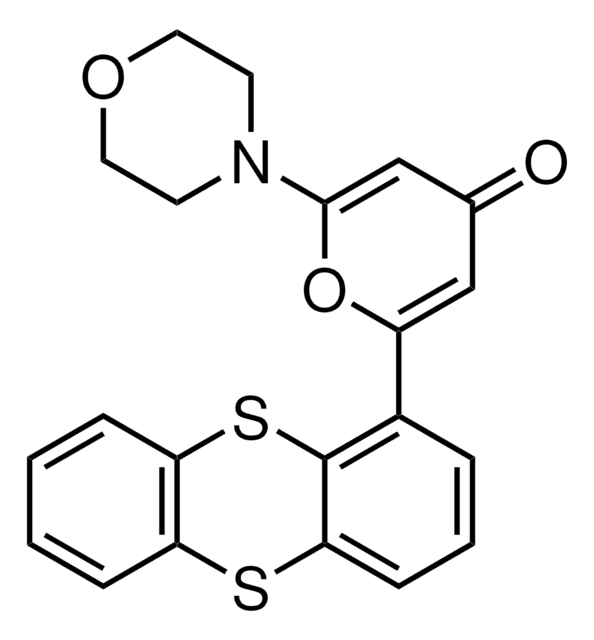Key Documents
D1068
DCB
≥98% (HPLC), solid
Synonim(y):
3,3′-Dichlorobenzaldazine, NSC 67224
About This Item
Polecane produkty
Próba
≥98% (HPLC)
Postać
solid
warunki przechowywania
desiccated
under inert gas
kolor
yellow
rozpuszczalność
DMSO: ~6.8 mg/mL
H2O: insoluble
temp. przechowywania
2-8°C
ciąg SMILES
Clc1cccc(\C=N\N=C\c2cccc(Cl)c2)c1
InChI
1S/C14H10Cl2N2/c15-13-5-1-3-11(7-13)9-17-18-10-12-4-2-6-14(16)8-12/h1-10H/b17-9+,18-10+
Klucz InChI
XMOVWXSCYLINBJ-BEQMOXJMSA-N
Działania biochem./fizjol.
Cechy i korzyści
Hasło ostrzegawcze
Danger
Zwroty wskazujące rodzaj zagrożenia
Zwroty wskazujące środki ostrożności
Klasyfikacja zagrożeń
Acute Tox. 4 Oral - Aquatic Acute 1 - Aquatic Chronic 1 - Eye Dam. 1 - Skin Irrit. 2 - Skin Sens. 1 - STOT SE 3
Organy docelowe
Respiratory system
Kod klasy składowania
11 - Combustible Solids
Klasa zagrożenia wodnego (WGK)
WGK 3
Temperatura zapłonu (°F)
Not applicable
Temperatura zapłonu (°C)
Not applicable
Środki ochrony indywidualnej
dust mask type N95 (US), Eyeshields, Faceshields, Gloves
Certyfikaty analizy (CoA)
Poszukaj Certyfikaty analizy (CoA), wpisując numer partii/serii produktów. Numery serii i partii można znaleźć na etykiecie produktu po słowach „seria” lub „partia”.
Masz już ten produkt?
Dokumenty związane z niedawno zakupionymi produktami zostały zamieszczone w Bibliotece dokumentów.
Nasz zespół naukowców ma doświadczenie we wszystkich obszarach badań, w tym w naukach przyrodniczych, materiałoznawstwie, syntezie chemicznej, chromatografii, analityce i wielu innych dziedzinach.
Skontaktuj się z zespołem ds. pomocy technicznej










